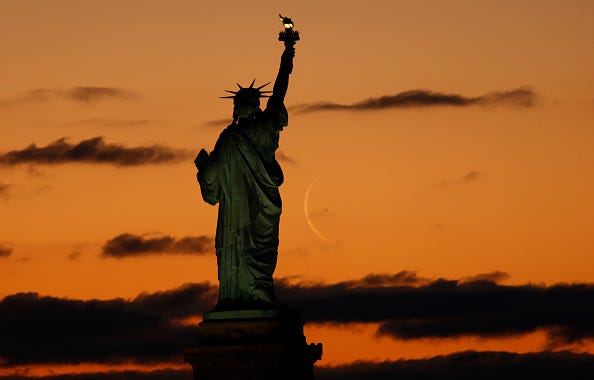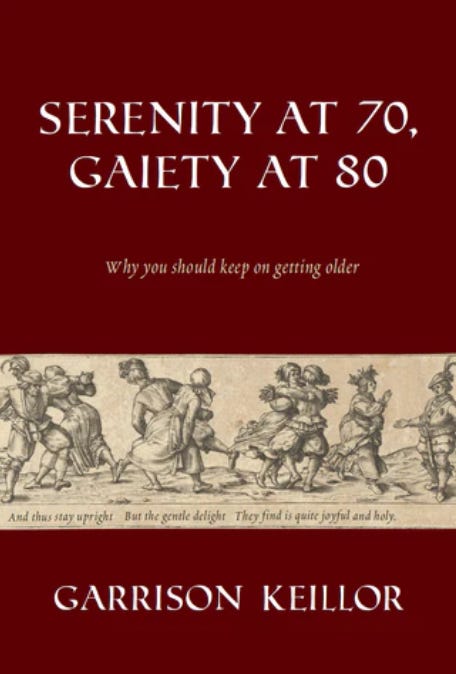“Song of the Shattering Vessels” by Peter Cole from Hymns & Qualms: New and Selected Poems and Translations. © Farrar, Strauss and Giroux, 2017.
ORIGINAL TEXT AND AUDIO - 2017
It’s Independence Day, the day the United States celebrates the adoption of the Declaration of Independence (1776) and the separation of the original 13 colonies from the British Empire. If you’re a chicken, hide: Americans are expected to barbeque about 700 million pounds of your brethren this year. More than 150 million hot dogs will be consumed, as well.
Thomas Jefferson wrote most of the Declaration of Independence; everyone else in the room thought he was the most eloquent and the best writer and he offered no dissent. It’s said that John Hancock wrote his name in extra large script so that King George would be sure to see it; the king suffered from cataracts. Fifty-six men from 13 colonies signed the document. One out of eight of them had gone to Harvard. Two would go on to become presidents of the United States.
The signing actually took place on July 2, not the 4th, and this fact always irked John Adams, who decided to protest the date of the new celebration by never, not once, attending a July Fourth celebration as long as he lived.
On July 18, 1776, the first public reading of the Declaration of Independence took place in Philadelphia, in Independence Square. Bells were rung and a band played music. Congress established the day as a national holiday in 1870. It became a federal holiday in 1938.
About the signing of the Declaration, Thomas Jefferson wrote: “May it be to the world, what I believe it will be … the signal of arousing men to burst the chains … and to assume the blessings and security of self-government. That form, which we have substituted, restores the free right to the unbounded exercise of reason and freedom of opinion. All eyes are opened, or opening, to the rights of man. … For ourselves, let the annual return of this day forever refresh our recollections of these rights, and an undiminished devotion to them.”
By 1777, Bristol, Rhode Island, had decided to annually commemorate the day by firing 13 gunshots in the morning, and 13 at night. In 1778, George Washington celebrated the day by giving his soldiers double rations of rum. The White House held its first official Independence Day celebration in 1801.
And even though he protested the event, John Adams wrote movingly to his wife, Abigail: “I am apt to believe that it will be celebrated by succeeding generations as the great anniversary festival. It ought to be commemorated as the day of deliverance, by solemn acts of devotion to God Almighty. It ought to be solemnized with pomp and parade, with shows, games, sports, guns, bells, bonfires, and illuminations, from one end of this continent to the other, from this time forward forever more.”
Today is the birthday of Nathaniel Hawthorne, born Nathaniel Hathorne in Salem, Massachusetts (1804). He married Sophia Peabody in 1842, and soon after their wedding, Hawthorne wrote to his sister, “We are as happy as people can be, without making themselves ridiculous, and might be even happier; but, as a matter of taste, we choose to stop short at this point.”
When he lost his job at the Salem Custom House, Sophia surprised him with money she’d put away out of her household allowance just so he could write a book. And he did: The Scarlet Letter (1850), about Hester Prynne, a young Puritan woman who bears a child out of wedlock and must wear a red letter “A” for adultery as her punishment. The first edition of 5,000 copies sold out in 10 days.
On this day in 1855, a slender volume of 12 poems was published in Brooklyn. Its author was a passionate man named Walt Whitman. The poems were untitled and the author wasn’t identified in the first edition of 795 copies. Instead, the first edition of what became a masterpiece of American literature, Leaves of Grass, featured a stippled engraving of Whitman, wearing rumpled work clothes and a jaunty hat. Whitman had designed the book and paid for publication himself.
The first edition didn’t sell very well. Lots of people who did read the poems found them offensive and some reviewers burned their copies. But poet and philosopher Ralph Waldo Emerson read a copy and loved it. He said, “I find it the most extraordinary piece of wit and wisdom America has yet contributed.”
Walt Whitman revised and rewrote Leaves of Grass for the rest of his life, five editions in all. Twelve poems grew to more than 400. Many of these poems, like “Song of Myself” and “I Sing the Body Electric,” are now taught in schools and featured in films and books. The book influenced artists like Bob Dylan, Allen Ginsberg, and even singer Lana Del Rey.
Whitman was always convinced that if he’d traveled the country and read the book to people, it would have received a better reception. He lamented, “If I had gone directly to the people, read my poems, faced the crowds, got into immediate touch with Tom, Dick, and Harry instead of waiting to be interpreted, I’d have had my audience at once.”
Nearly 200 copies of the dark green first edition survive. One recently sold for more than $200,000 at auction.
In Leaves of Grass, Whitman called himself “an America, one of the roughs, a kosmos.”
The French presented the United States with the Statue of Liberty on this date in 1884. The statue owes its origins to a comment made by the president of the French Anti-Slavery Society, a man named Édouard René de Laboulaye, in 1865. The American Civil War was in its last stages, and Laboulaye, who was hosting a dinner, suggested that a monument be built to honor America’s commitment to democracy. Sculptor Frédéric-Auguste Bartholdi was at that dinner, and he began to think about what form a monument like that might take. Inspired by the legendary Colossus of Rhodes, he envisioned a robed woman holding a torch aloft to lead people to freedom. It took 21 years to bring Bartholdi’s vision to fruition. Engineer Gustave Eiffel, of Eiffel Tower fame, built the statue’s metal scaffold. Three hundred sheets of thin copper were hammered into shape and attached to the scaffold in France for the statue’s presentation to the United States, and then it was dismantled and transported to New York’s Bedloe Island by boat, where the statue could greet immigrants on their way to Ellis Island. The American poet Emma Lazarus wrote a sonnet, “The New Colossus,” to raise funds for construction of the statue’s pedestal; the sonnet was inscribed on a plaque and displayed inside the pedestal in 1903.





